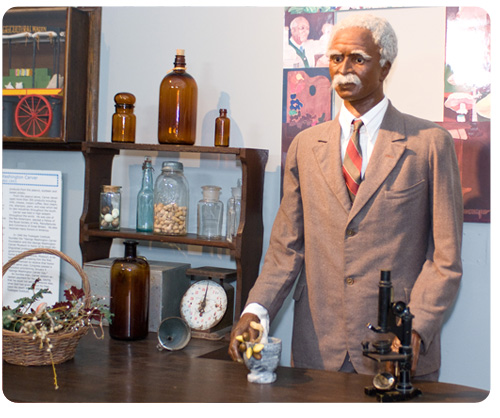 |
 |
||||||
 |
|||||||
 |
|||||||
Molded, glazed, and painted—this oyster plate is intended for serving a delicacy—the esteemed shellfish is also incorporated into the design. The four shell-shaped indentations, each with a small hand-painted oyster, and a fifth more purely decorative section, surround a pale blue sauce well. Edged or embellished in gold, the white shells sit in a grayish-green surround—perhaps suggesting seawater. What is the occasion and who will be at the table when this is used? As Robert Campbell’s businesses expanded and married life replaced mountain treks, so did his ability to provide the best furnishings available in marketplaces of Europe as well as with dealers and merchants on the East Coast. Moving into the stately Lucas Place residence in 1854 provided a perfect opportunity to acquire items of the latest fashion, best design, and finest materials created by highly skilled artisans demonstrating the latest technology. Frequent travels familiarized the Campbells with what was current and popular in everything from furniture and wall coverings to china and flatware. Their new home grew into a place where they would entertain guests ranging from presidents and statesmen to fellow entrepreneurs and society’s elite. A staff of trusted servants attended to every aspect of running the household where luxury items such as this plate graced the table. The serving of oysters became so popular that European designers and manufacturers produced specialized-ornate plates such as this nineteenth-century gilded French porcelain oyster plate. Recipes for this delicacy were as sought after as the shellfish itself. At the Campbell home in later years, when a new cook arrived, she was presented with a White House cookbook featuring oysters. Popularity for shellfish abounded. A landowner in central Missouri related having his children roll an enormous snowball in preparation for the seafood that would be arriving by steamboat from New Orleans. It was carefully inserted into the center of the ball—the slow melting kept it “on ice” so a summer feast could be had. The Victorian era was one among a number of periods in history in which the natural beauty of pearls not only made them very desirable, but led to over-harvesting of both oysters and mussels. Both are members of the mollusk family, though their eco-systems differ. Mussels, sometimes mistakenly referred to as “fresh-water oysters,” were plentiful in the Mississippi River and coveted for the beauty of their pearls—more luminous and varied in color than those from oysters. North American Indians in the Mississippi Valley left hills of mussel shells that have been uncovered at various sites. They were valued as food, for the pearls, and as a source to make wampum or shell beads. The shell linings are pearl-like. The larvae stage of mussels attach to host fish until a metamorphosis allows it to release and nestle into a stream bed. Maturity is slow—some live as many as fifteen to fifty years. Commercial over-harvesting for button-making in the nineteenth century led to entire beds dying out. A tool called a “crowfoot” was frequently used. By 1900 more than sixty button factories had been established along the Mississippi River. Survival was further hampered by the changes made in the channel for commercial boat traffic |
|
||||||
©2010 Urban Museum Collaborative |
|||||||
